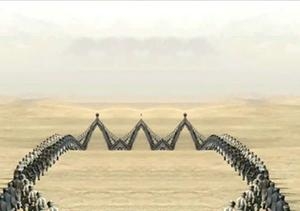The artist’s impression of war
As the Australian War Memorial’s inaugural artist-in-residence, PhD candidate Baden Pailthorpe will develop new work exploring the impact of war on society.
As the Australian War Memorial’s inaugural artist-in-residence, PhD candidate Baden Pailthorpe will develop new work exploring the impact of war on society.

As the Australian War Memorial’s inaugural artist-in-residence, PhD candidate Baden Pailthorpe will develop a new body of work exploring the impact of war on society.
The three-month Early Career Residency program, funded by the Australia Council for the Arts, will give Pailthorpe access to the Memorial’s collection and the opportunity to reinterpret Australia’s military history through contemporary media.
A new media artist studying in the School of the Arts and Media, Pailthorpe is researching military aesthetics and contemporary warfare against the backdrop of German philosopher Peter Sloterdijk’s theories of WW1 and modernity. The residency will allow him to demonstrate the role art can play in informing others of wartime history, he says.
Taking up the position in July, Pailthorpe hopes the residency will open up “exciting parallels” with his research and plans to expand his artistic practice to include sculpture-making and other forms of installations. His recent exhibitions have looked at the aesthetics of military technologies, such as training simulators.
Pailthorpe holds masters degrees from COFA and l'Université Paris VIII as well as a UNSW Research Excellence Award. His videos and photographs have been exhibited widely in Australia and internationally.
Formation VI, currently in the Memorial’s collection, is a video set within the US military’s simulated version of Afghanistan. In it Pailthorpe plays on the notion of subversion within a controlled environment.
“Many technologies that we use today come from military research. As a new media artist, it’s natural to look closely at the history of the tools we use. I think it is important to acknowledge these traces and to explore their influence on contemporary society,” Pailthorpe says.
Following his residency at the Memorial, Pailthorpe will take up another three-month residency at the Cite Internationale de Arts, Paris, further developing his PhD as he researches the French archives from WWI.
"Art can be a very powerful way to engage the public. It has a unique, dynamic language that can often exceed the limits of more standard methods," he says.
Media Contact: Cassie Chorn, UNSW Media Office, (02) 9385 8107